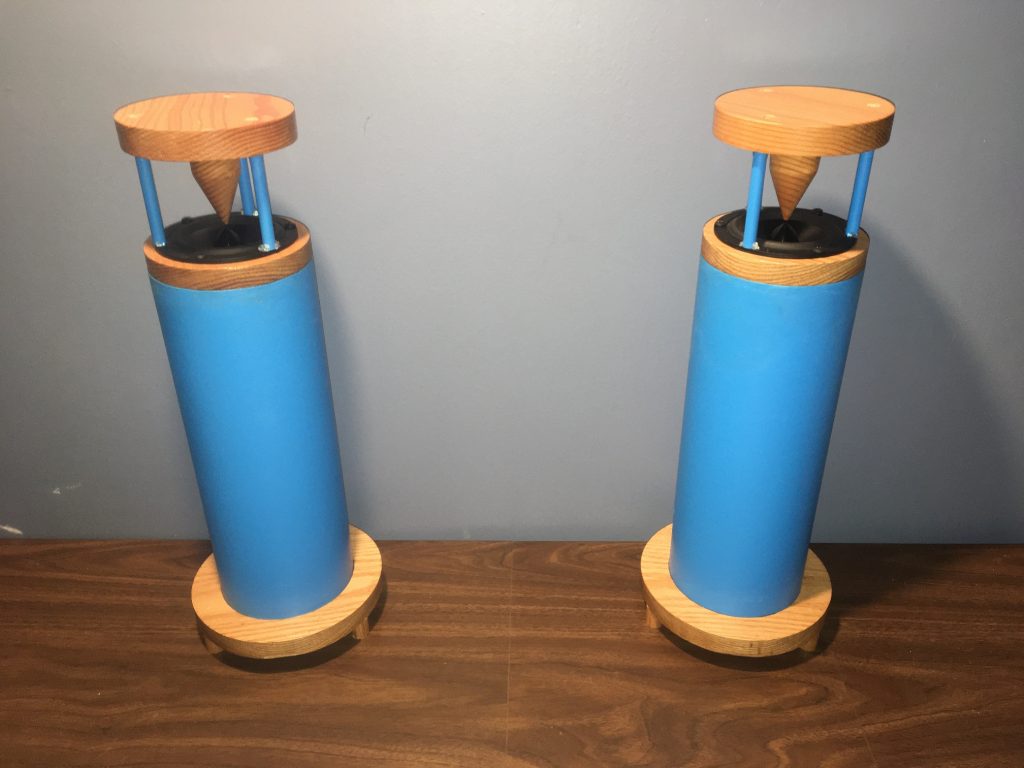Agreed, but systems based on regular polyhedrons can, at least in principle.
Hello Dave,But they are rare. i have the bits to build an icoshedron with drivers on each face.
It’s a bit complicated, but I think you should not put more than 4 drivers in your polyhedron.
If you, as an example, take a dodecahedron with 12 drivers, you will always “see” more than 1 driver from the listening position. These drivers you “see” are all at a slightly different distances from your ear, so you get cam forming due to the different delays (no time alignment). These distortions will be probably not exactly the same for the right and left speaker. And because in particular differences between right and left results in a woolly stereo image, cam forming should be avoided.
That’s why I think you should put no more than 4 drivers in your polyhedron and aim just one of the drivers to the listening position. This to ensure that there is always only one driver “in sight”, and no cam forming occurs.
The Design Acoustics D-12A functioned somewhat in this manner:

It was a development of the D-12, which was more a typical omnidirectional design (woofer firing down, midrange pointed upwards and nine tweeters girdling it). The D-12A mixed things up and was more directional in its pseudo-omnidirectionality. Review: https://worldradiohistory.com/Archi...eo/70s/HiFi-Stereo-Review-1979-03.pdf#page=44
It was a development of the D-12, which was more a typical omnidirectional design (woofer firing down, midrange pointed upwards and nine tweeters girdling it). The D-12A mixed things up and was more directional in its pseudo-omnidirectionality. Review: https://worldradiohistory.com/Archi...eo/70s/HiFi-Stereo-Review-1979-03.pdf#page=44
That’s why I think you should put no more than 4 drivers in your polyhedron
But i have over 40 drivers to use up. And it is a fun project. An Omni is a specific set of compromises.
dave
What type of driver is it ?But i have over 40 drivers to use up
35mm Foster driver out of an Apple eMac.

And i figure 8 4” woofers (Eastech) in a dodecehedron for bass support.
dave
And i figure 8 4” woofers (Eastech) in a dodecehedron for bass support.
dave
These turned out better than I thought they would:
https://projectgallery.parts-express.com/speaker-projects/top-hats-in-fir/
Using a BMR will get you most of the way to omni with less cabinet building hassle.
https://projectgallery.parts-express.com/speaker-projects/top-hats-in-fir/
Using a BMR will get you most of the way to omni with less cabinet building hassle.
35mm Foster driver out of an Apple eMac.
View attachment 1135513
And i figure 8 4” woofers (Eastech) in a dodecehedron for bass support.
dave
Ahhh... mystery solved!
https://www.iflscience.com/rare-dis...fragment-adds-to-archaeological-mystery-67294
- Home
- Loudspeakers
- Planars & Exotics
- Omni-directional-ish Speakers?
